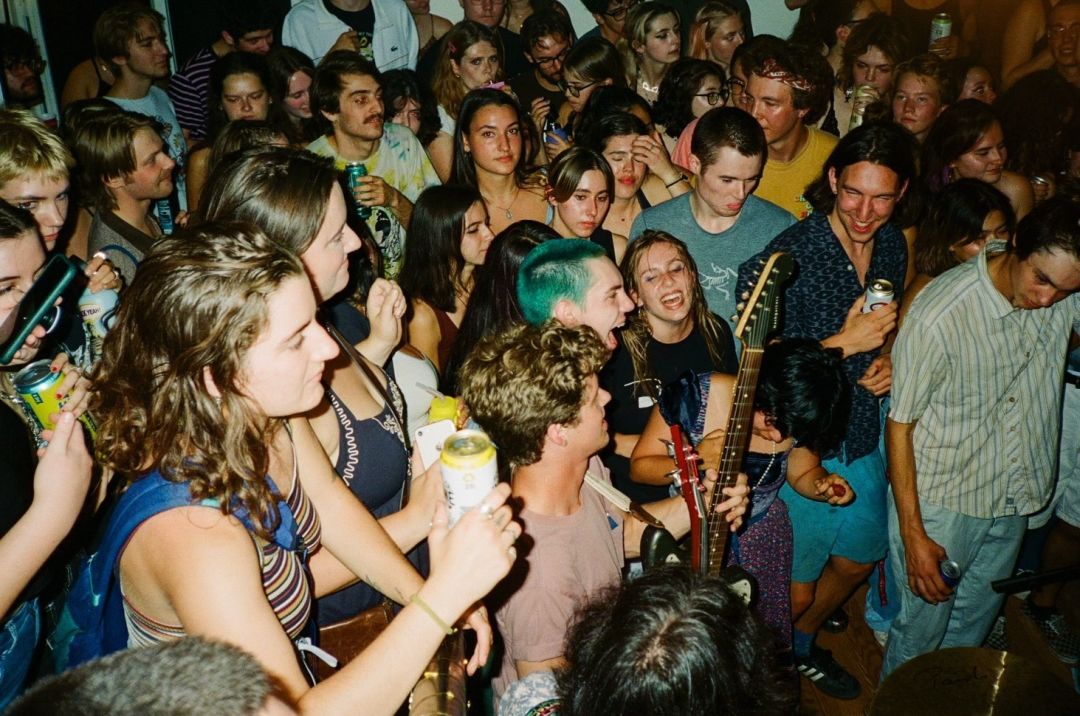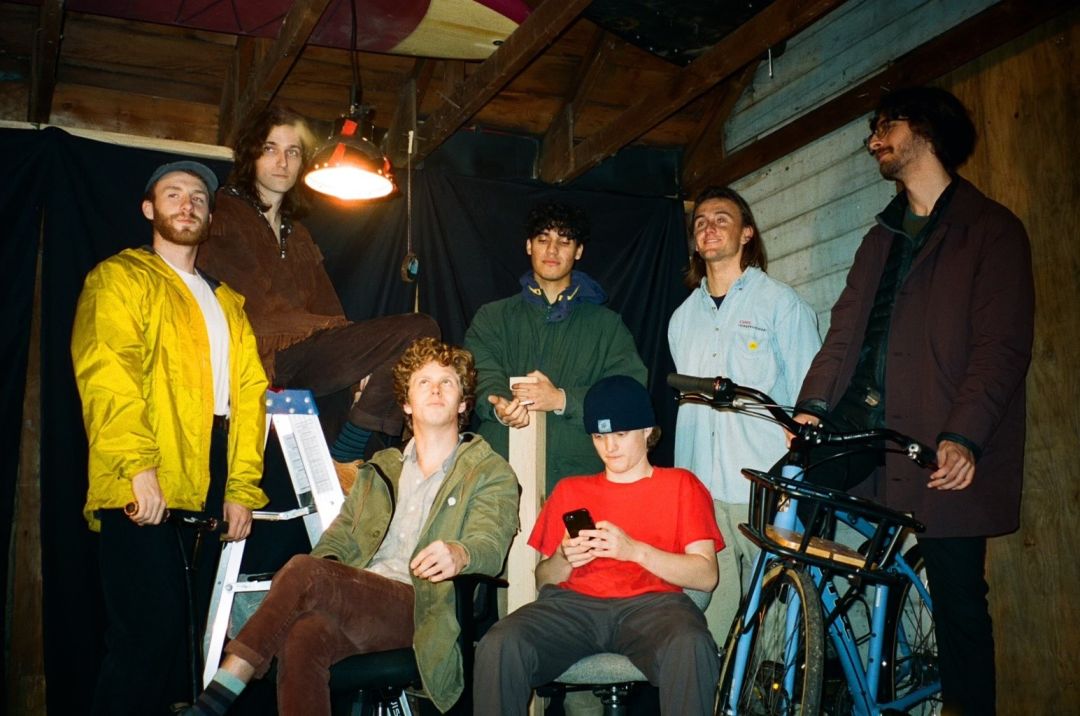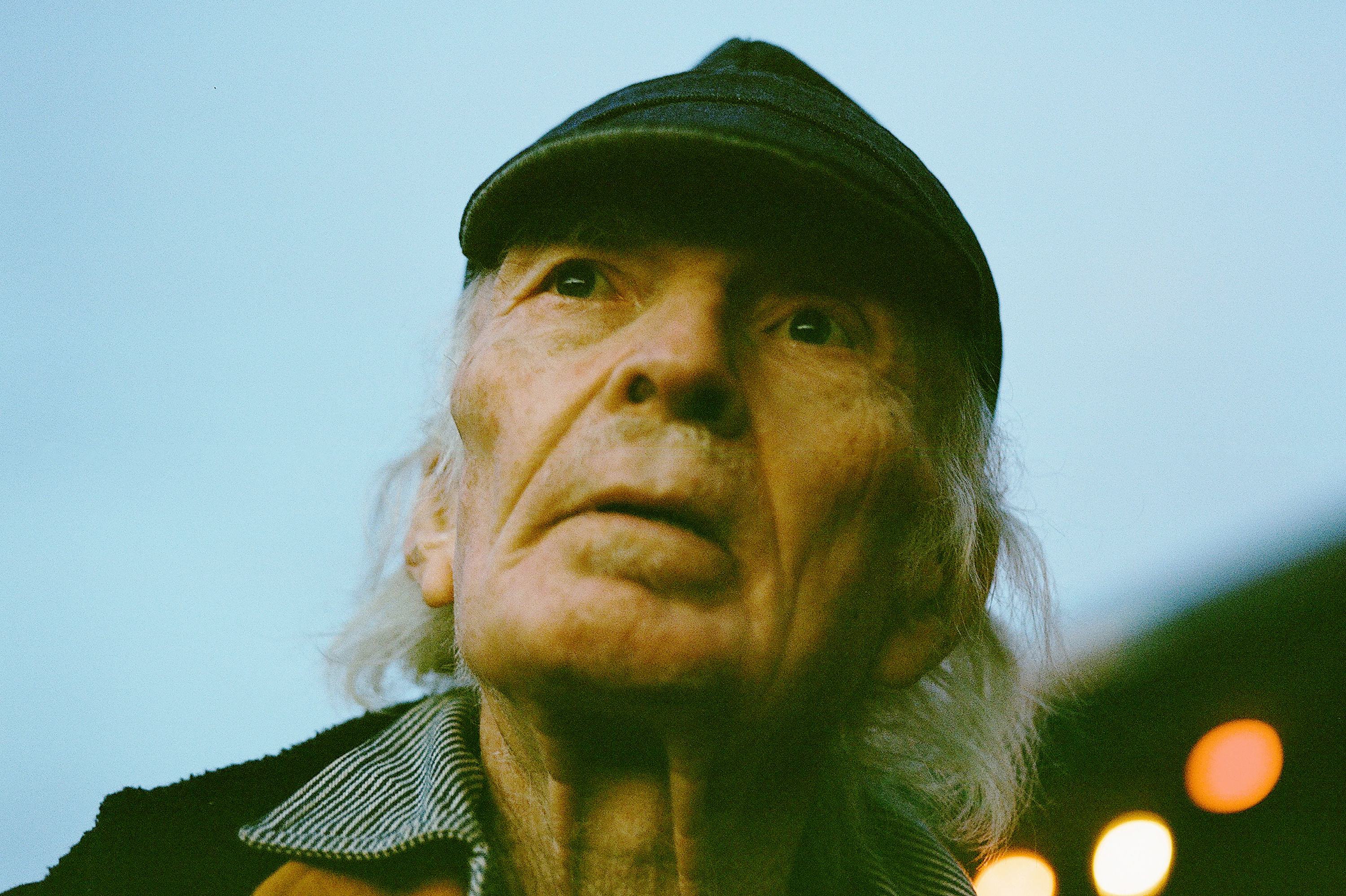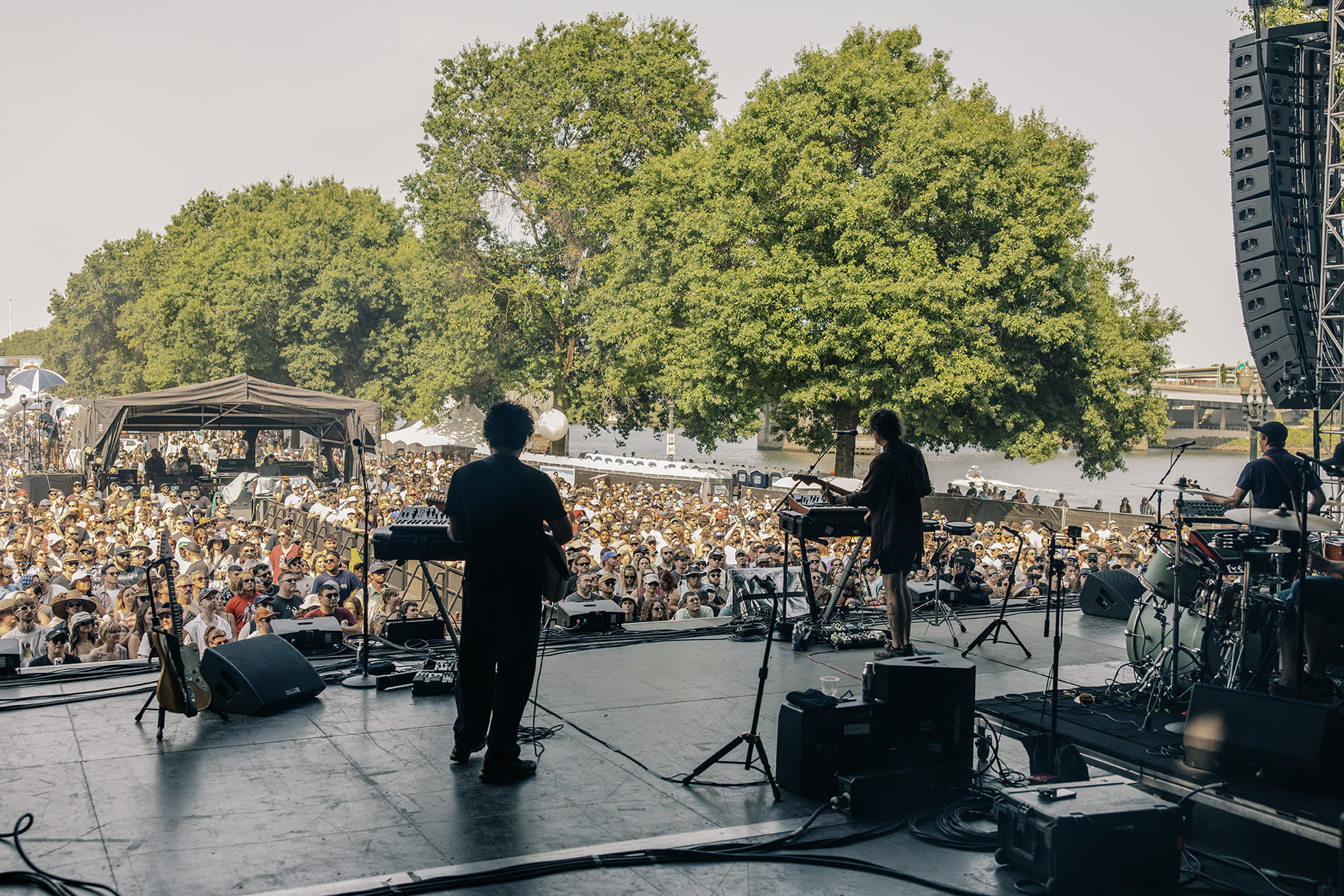Inside Portland's Booming House Show Scene

Portland DIY venues are reporting huge upticks in crowd sizes as the omicron variant recedes
Image: Evan Yerian
As my friends and I made our way up a hill and down a very narrow street in our trusty 5-star Uber, we sat quietly, not knowing exactly what we were about to walk into. We hadn’t been to a function like this since college—otherwise known as last year—although who’s to say when our last true college-scale party was, thanks to COVID. As the Uber scraped not one but two cars along the final stretch of road, our friend in the front seat mumbled, “We can just get out here.”
“Here” was a home in the hills of SW Portland, with a garage overflowing with people, the clang of skateboard wheels hitting a homemade half-pipe, crowds climbing through the bushes to avoid the cover fee, and a single toilet with a line that solidly designated peeing in the bushes the lesser of two evils. Otherwise known as: a house show.
For time immemorial, people have been transforming their living rooms, backyards, and garages into DIY music venues. Current venues with outlandish names like Gloom House and Art Fart have kept the Portland scene afloat, even during the pandemic, and new ones continue to crop up—including the Sap Shack, where my friends and I dismounted from our ill-fated Uber.
“It’s kind of silly and self-important to have all these official names, but that’s the way it is I guess,” says John Wallent, bass player and social media manager for Portland band Mr. Beautiful. The Sap Shack is home to Mr. Beautiful, and about a third of the Lewis and Clark student body on any given weekend. After playing a legendary indoor gig now known among the house show community as the “beam breaker show,” keyboardist Danny Charvat converted the band’s SW Portland garage into a venue for them to play their Afrobeat funk songs and host other DIY musicians.
The garage-turned-outdoor-venue has not only given their landlord and floor beams a break, but it’s also better supported the influx of numbers of people at their shows of late. Wallent says that Mr. Beautiful shows held post-omicron, and in the brief period before, had a turnout of more than 500 people.

Mr. Beautiful from left to right: Tommy Higgins, Chris Clark-Johnson, Max Simon, Fabián Guerrero, Charlie Oakes, Danny Charvat, and John Wallent.
Image: Coco Simone
“I’m gonna say something really corny, but it was like the stuff of legends,” says Wallent. “People were so cooped up, and they just came out to these shows for like the first time in like a year and a half, and threw down so hard—no matter what the music was.”
He’s not alone. JJ Shafe, owner of Gloom House, one of Portland’s major house venues, books a huge number of underground shows in PDX and confirms a huge uptick in house show crowd numbers in the past year. In the underground punk scene specifically, Shafe reports individual gigs with upwards of 700-800 people, when it used to be “hard to find a crowd of 100 people.” As those crowd sizes continue to balloon, the house show scene is wrestling with the best way to keep their pandemic-starved audiences safe.
“A big part of that has been implementing new [safety measures],” says Shafe. “With our venue, I’ve kind of intentionally... set clear rules and boundaries, which I think has helped us avoid a lot of the problems I’ve seen elsewhere. Some of the other people I work with have had to implement a lot stronger measures to try and combat that.”
House shows operate as a deliberate counterpoint to more regulated bar gigs, which are traditionally 21+ and include a whole host of red tape. They offer underground musicians chances to get live experience in without exorbitant booking fees, and crucially, they’re usually all-ages—“often one of the only places for youth to go” to enjoy live music, says Manny R., guitarist for Portland rock band Chainsaw Girl.
That said, house show venues are largely volunteer-run, and aren't set up to respond to an increase in demand. And other than the universal “biggest issue with throwing house shows”—noise-averse neighbors—there are much bigger safety issues that come with increased crowd sizes, even for bands like these who try to be mindful of those who live next door.
Last year on Halloween, Wallent says a friend of his got drugged, either at or before a Mr. Beautiful show. It’s something that could happen in a crowd of any size, but it served as a wake-up call for the band as more and more people started packing into their house. “We were like, OK, from here on out we have to create an active effort to create a safe environment for people,” Wallent says.
Mr. Beautiful took to Instagram to post a statement about the incident, and said that they will be “taking a militant stance against any sort of abusive behavior.” After the Halloween show, the Lewis and Clark Feminist Student Union reached out to Mr. Beautiful to discuss potential safety measures going forward. The band ended up hiring five SAPA (Sexual Assault Peer Advocate) and bystander intervention trained representatives from the FSU to work their post-omicron comeback show in March. The student representatives brought with them things like condoms, Plan B, and fentanyl test strips.
Jill Sullivan, a Eugene musician who performs as Chipped Nail Polish, and opened for Mr. Beautiful's March show, was heartened to hear of the effort. “Back in my day, it was kind of a free-for-all,” she says. “There were some houses that had a better reputation than others, and typically there would be at least a couple sober people at the shows who were ready to take on a situation that was potentially sketchy. But as far as advertising ways in which people were taking safety steps, I didn’t really see that in college.”
The Feminist Student Union threw out a few “known offenders” who tried to make their way into the Mr. Beautiful gig, but other than that, there were no reports of abusive behavior. The group plans to keep these new safety measures in place going forward.
For their part, Manny R. says Chainsaw Girl has found a sustainable way to manage the resurgence of house shows in the past year by selling tickets to their gigs and capping the amount of sales based on the capacity of the house they’re performing at. They’ve also required masks and proof of vaccination upon entry at all of their shows.
“We tried ticketing at the last DIY show we did, and it was perfect,” said Manny R. “We sold all the tickets, kept it under the house’s limit that they set, and it was great. No problems.”
Next, Chainsaw is considering setting a max capacity for house show venues, a solution that Shafe has always implemented at Gloom House, along with creating a security and safety team, and advertising Gloom House as a “no alcohol, no hard drug venue.”
“I was in a band and we started in the bar scene. But playing to a bar crowd is very uninteresting. It’s usually people who are just there to get drunk,” says Shafe. “Having a no alcohol and drug policy has allowed people to be a lot more present, and to enjoy the music more, and has just provided a much more welcoming atmosphere.”
Going forward, Manny R., Shafe, Sullivan and Wallent all say they’re very optimistic about the future of house shows, and their safe return.
“Everyone here wants to have a good time. Instead of just acting like these things might not happen, it’s like, OK, yeah, how can we make this as safe of a place for people as possible,” says Sullivan.




